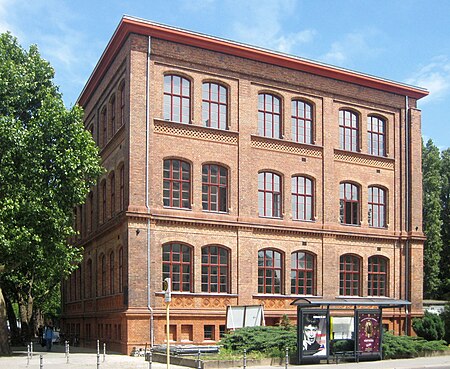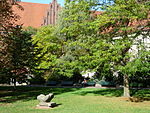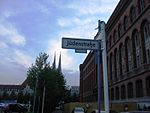Köllnisches Gymnasium

The Köllnische Gymnasium was the first Berlin Realgymnasium. The school building was constructed in 1868 at the corner of Insel-/Wallstraße in the Berlin suburb of Neu-Kölln according to plans by the city building councilor Adolf Gerstenberg. Today, the Fanny Hensel Music School is located in the heritage-protected building complex. As early as the 14th century, there was a Köllnische Latin School on the western bank of the Spree. In 1540, Heinrich Knaust, a student of Martin Luther and Philipp Melanchthon, took over the leadership of this school. After the Seven Years' War, in 1766, the upper level of the Berlin Gymnasium zum Grauen Kloster was merged with the Köllnische Gymnasium. The educational institution was now called the Berlin-Köllnische Gymnasium zum Grauen Kloster. However, in 1824, the separation occurred again. The students of the Köllnische School used the premises of the Kölln Town Hall. Due to increasing numbers of students in the 1860s, the municipal administration commissioned a new school building, providing the plot at Inselstraße 2–5 for this purpose. Between 1865 and 1868, the schoolhouse of the new Köllnische Gymnasium was built according to plans by Adolf Gerstenberg, who at the same time also constructed the school complex of the Sophien Gymnasium on Weinmeisterstraße. The school's modern language profile was expanded to include a classical education, and special sports such as fencing were taught. Once considered an elite institution, by the 1920s it had become accessible to the lower classes. After the Nazis came to power, the educational institution was renamed Altköllnische Schule. The school was relocated to the Protectorate of Bohemia and Moravia in 1943. Students who could not or did not want to move attended schools in the Berlin suburbs.
Excerpt from the Wikipedia article Köllnisches Gymnasium (License: CC BY-SA 3.0, Authors, Images).Köllnisches Gymnasium
Wallstraße, Berlin Mitte
Geographical coordinates (GPS) Address Nearby Places Show on map
Geographical coordinates (GPS)
| Latitude | Longitude |
|---|---|
| N 52.51275 ° | E 13.41216 ° |
Address
Musikschule Fanny Hensel
Wallstraße 42
10179 Berlin, Mitte
Germany
Open on Google Maps









